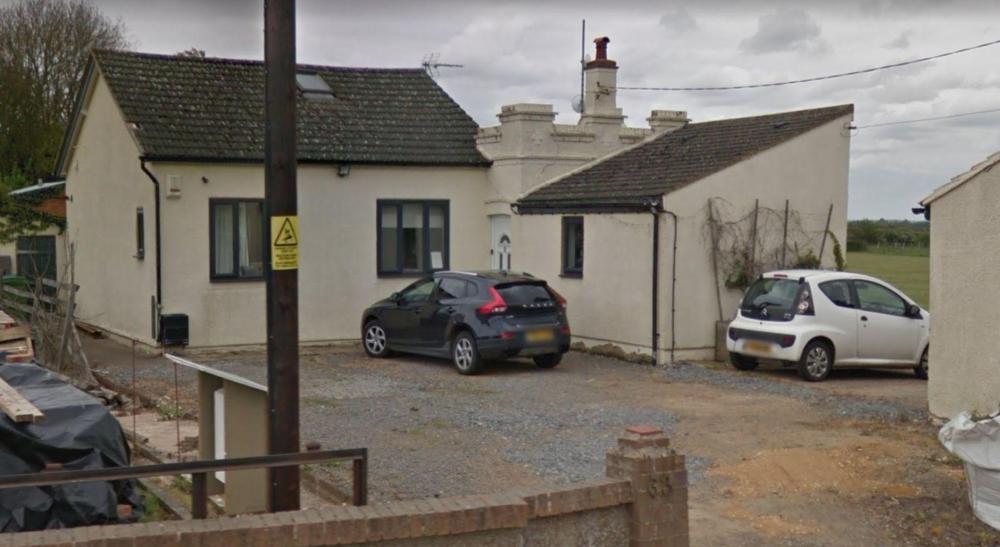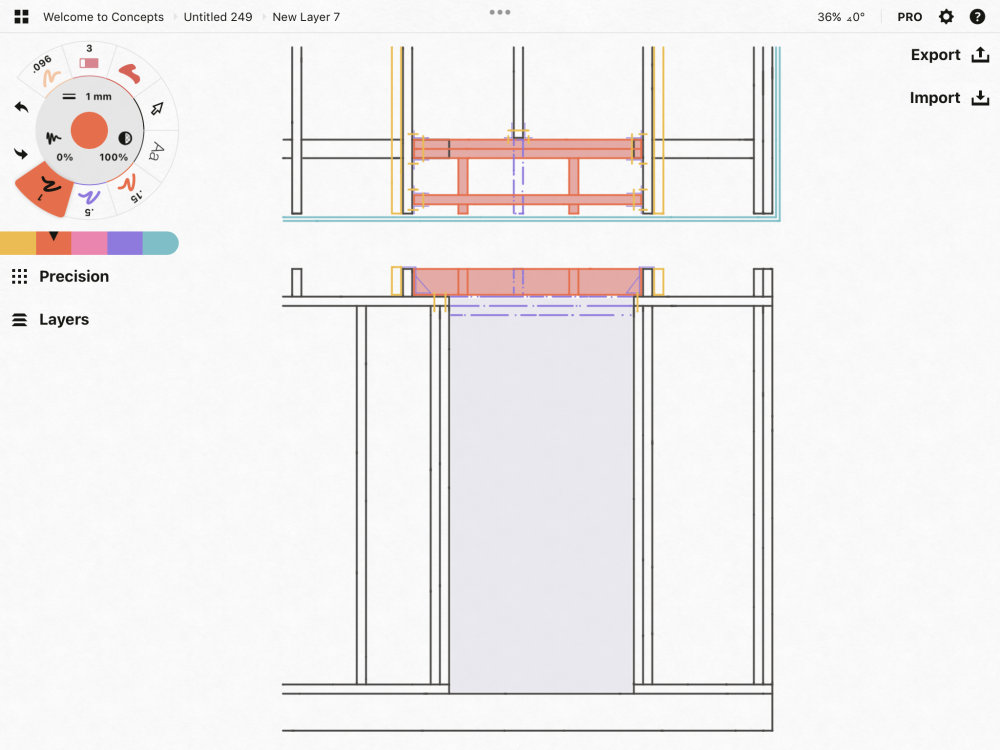Leaderboard
Popular Content
Showing content with the highest reputation on 05/04/22 in all areas
-
Hi All, I thought I share a photo of our selfbuild, well house remodel. It's taken a long time, we fell out with the builder last year and so doing the work ourselves, it's not quite finished yet but getting there. My opinion of builders out the moment is so low, if I ever treated my customers like the way we were treated, I sure there are good ones out there, somewhere. Anyway: Before After8 points
-
What I forgot to mention, is the temperature ramps up, because the control system is trying to maintain a delta T between supply and return, not enough heat is being extracted, so it sees higher than expected return temperatures so ramps up supply temperature.2 points
-
Interesting pairing of equipment. I think these two issues: (1) The (shorter) Indirect coil at top of the tank means return temperatures are higher than with a standard HP coil lower down in the UVC. The higher return temperature pushes up flow temperature (which is not constrained) as the ASHP attempts to maintain a [flow temperature that tracks the gradually increasing cylinder temperature] (2) The ASHP doesn't see the UVC temperature increase over time (it's fixed due to resistor switch), so the ASHP [ratchets up the flow temperature to try heat this cylinder that is apparently being drained so fast that it cannot be reheated] You will achieve the highest COP by heating the entire cylinder from cold to hot "in one go" at as low an average temperature as possible, vs incrementally heating a cylinder from full cold to full hot "a bit at a time" at the maximum temperature. In a "standard" cylinder for heat pumps (with a ruddy great coil from top to bottom) the heat pump sees cool water that warms up as the cylinder warms. If it is DUMB them it runs at a fixed temperature. If it is a little smarter the heat pump can set flow temp = 10C above return temp (or some other number that achieves a reasonable power input / reheat time) and up the temperature gradient it runs until the cylinder is satisfied. If the heat pump is bit smarter again it can, if tsenses that he cylinder is already part heated, always run at a minimum of say 50C output in order to avoid cooling the top part (that's ready to use) whilst it's heating the bottom part. If it is REALLY clever it will have a desuperheater on it to top up the cylinder whilst providing space heating. The "mixergy" coil is configured for heating a cylinder "a bit at a time" from a heat source that doesn't much care about temperature. It's the total opposite of what you want for a heat pump. If you do everything that you can to minimise this stratification and heating in parts - i.e. defeat most of the purpose of the mixergy tank except for the inlet diffuser - then you will maximise heat pump performance. I don't think these are remotely appropriate for use with heat pumps myself. Your heat pump is going to do "whatever it wants to" in order to achieve a tank at the target setpoint - in your case 55C. It has two ways to see what the temperature is. (1) flow and return temps from cylinder primary (2) temperature probe on cylinder I would guess that is is kinda smart. If given a totally cold tank it would ramp the temperature up at return + X degC until setpoint achieved to maximise efficiency. If given a part warm tank it would ramp up at return + X degC, subject to a minimum of say 50 degC so that it doesn't discharge what's already at the top of the cylinder. It will use (2) to decide when to stop and (1) to decide what temperature to use. If the heat pump were DUMB then you can set it to X and rely on an external contact. X is 50C for slow reheat to 45 or 65C for faster reheat to 55C etc. The Arotherm is probably too smart for this application. Try heating a stone cold tank in ECO mode and watching the flow tempeatures? If that works then you know the issue. The Mixergy tank, unless the smarts are defeated, is going to cause problems. You're trying heat the cylinder from full cold to full hot "a bit at a time" as it were. This will result in fairly high return temperatures to the heat pump and the heat pump thinking that the cylinder is almost fully heated. It is logical for it to increase the setpoint in this scenario. You don't have any way to recreate the effect of a "top to bottom" coil. Running a destratification pump to try mimic the effect of a "top top bottom" coil will blend the tank temperature; improving heat pump performance; but killing the "hot top" that you get with a heat pump tank. Running the water through a plate is more flexible but ultimately has the same drawback. Low flow through the plate means "heating a bit of the tank from cold to hot in one go" whilst high flow through the plate mixes up the entire cylinder and loses your "hot top" again. Perhaps set to space heating mode to make the setpoint dumber and allow mixergy to control it? Swap the mixergy tank for one that's more suitable?2 points
-
My opinion of late, is fcuk the DNO and the indignity of going on bender knee to them to “ask permission” to put a wedge of PV on my ( or your own ) home. They can bite my shiny metal ass afaic. I am going with hybrid inverters, ( plural ), zero export, non MCS ( as the payments are an insult ), and going nuts with battery storage. G100 compliant equipment has been chosen of course, so at the most I need the DNO to come visit to do a “witness visit” to confirm that my equipment does NOT export anything whatsoever. Their choice, not mine. I’m fitting panels everywhere so I can get as close to zero import as is possible. I don’t have to worry about how many kWp I’m fitting, as I do not ( will not ) need permission with everything loaded on the D/C side plus zero export limitation. Anyone worrying over what the current or future export payment value is / will be has seriously lost track of what they set out to do. Who cares about what the export value is, as you should be reducing that to a minuscule amount or less.1 point
-
I think @Nickfromwales was saying that a 4kWp array would produce less than 1000W (25%). my opinion is you should put as much solar pv as you can afford to now (but also consider what the DNO will allow and what that would mean) and not worry about ROI. no one knows what the future holds and if you've the funds to put in to PV now then just do it. if it's a choice between a 12kWp array or a 4kWp array and much better insulation or, worse case, not being able to afford to finish the project then I think we all know what's the best way to go.1 point
-
Yeah, I realise now that taking that wall out wasn't the best move but when someone you know as a builder says you can... 😕 According to some of the building regs (that I found on Google) I've read, if I (or a builder) was to replace a joist and sat it wall to wall, I can use C24 44/47x175mm for the span I'd need. My ajoining neighbours house is a mirror of mine and they don't have a wall/pillar like I do, without an RSJ so I'm keeping my fingers crossed! (might be the only thing I can do!) Once I manage to get a builder out, I'll post an update what what they say. Does it need to be an SE that looks or can it be a builder? John1 point
-
As I feared, the two "used to be sat on a wall" are now effectively one joist, spanning a longer distance than they did originally, and with the added complication that there is a joint in that now effectively longer joist. Definitely need a SE to first tell you if that joist section can actually span the longer distance now the intermediate wall has gone, and if so is that joint adequate to do so or does it need some reinforcement.1 point
-
Any programmable room stat should do that. You don't set on or off times, you set what temperature you want at what time of day, so you set your daytime period to one temperature and the night temperature a few degrees lower.1 point
-
Agree on the second hand plant market - it’s mental. Saw an 18 month old Kubota go through auction (not eBay…) for £1200 more than it’s original sale price. I know that there are supply issues for the smaller machines as they come in from abroad so everyone is hanging on to what they have got.1 point
-
1 point
-
1 point
-
1 point
-
sorry to be put a downer on this digger love fest but diggers are in very short supply at the moment. if you're going to hire one make enquiries very early to avoid disappointment. 🙂1 point
-
That should work That is what MBC were going to do with my parent's house, but it means you have to put battens under it for lights etc. We are putting a VCL on top of the roof which is the spec for the EPDM we are using. Our VCL runs up the walls then under the ring beam and over onto the roof, to seal things up. However, if you are selling PIR into that space then you just need to run the VCL up the wall and tape it to the PIR/Joists. However, this assumes a VCL above the roof deck. There has to be one somewhere.1 point
-
I chose Enhabit to do my Solar PV, ASHP and MVHR. they got taken over by/merged with Green Building Store who no longer (at the time of writing) offer Solar PV and ASHP down in the south east and so Enhabit refunded me for work not undertaken and sent me on my merry way to find someone else to finish off that work. our MVHR was taken over by GBS and they're currently installing that. due to the above I can no longer recommend Enhabit but it might be worth giving GBS a call to see if they cover your area.1 point
-
I have a gas boiler and I am using the indirect coil at very low temperature 30 degs. I see exactly the same as you. My flow temp increases well past the set point and eventually trips at 55 degC. So what is happening. In my case and most possibly yours, is the coil surface area is not large enough to transfer the heat to the cylinder contents. The lower the heating medium temperature the larger the coil required, to transfer the heat to the cylinder. Two ways to fix, can you heat the cylinder directly instead of indirectly (this will increase volume of glycol required). If not, a pumped circuit could be used through a large plate exchanger. So HP is used on hot side of the plate exchanger, the cold side connected to you cylinder. In my case my boiler should be generating 7kW, with boiler output of 30 degC, and return of 25degC. Have sized for a 2 deg approach temp, so that 28 degC is coming out on the cold side to the cylinder. PHE is a 40 plate and sized at 430x81mm. So quite big. Handy calc tool https://www.heat-exchangers.uk/online-calculator/1 point
-
Two things worth looking into. Separate ring is normal for storage heating as they are supplied via the E7 part of the electrical system. The rest of the may not be. 1. PV produces the best part of nothing during the heating season, so would not offset the heating costs, even slightly. What is produced in winter will just be self consumed. 2. In winter they will be charging up the storage heaters and charging the battery via E7. Quick calc they are spending over £800 on heating. I would be tempted to give the storage heaters a bit of an overhaul and good clean out. Review, improve the insulation situation and fix the drafts.1 point
-
- Fold the top of the sheet to that you have a "french cleat" (like the flush-mount firings listed earlier from toolstation) to hook it onto some clips? No. the bottom will flap and it will fall off. - Fold the top AND bottom of the sheet with the bottom one LONGER than the top one; hook over the bottom clips, slide up, hook over the top clips, allow to fall. Can't come off the bottom clips without lifting it up and over the top clips. Same effect can be achieved using the flush mount clips and same size flanges on the sheet. If you don't want the edges being different? - Fold all found edges - Weld the clips on. Not with a farmer's arc welder all in one go out in a field but an automotive type MIG welder in short bursts that isn't going to blown through or distort 2 mm plate. Spot welding would leave marks both sides. Could be a design feature. Could be ugly. I wouldn't want an arm / head sliced off by a piece of 2 mm steel plate and wind / gravity.1 point
-
Please do not use a membrane - it does not do any good as weeds will come in from wind and birds, neither of which will be stopped by the membrane but it isnt good for worms and they are the lifeline of good soil and that includes the soil under lawns. Just make sure the weeds are killed off before you start the lawn. Good luck!1 point
-
Someone else may know better than me, but I am not sure that filling the steel with foam will make much difference. The path for heat loss is mainly through the steel itself, not through the air inside the steel. The heat would still travel through the steel. Is there any option to put insulated plasterboard in these areas on the inside of the steel? You would probably see more benefit filling the timber cavities. However, looking at the pictures, putting insulation on the inside of the wood and also taping up the area so that cold air cannot get in from the city might be better. i.e. put insulation in the gap between the last two joists as otherwise the inside timber of the cavity is a cold spot. This is what we will be doing on our warm flat roof, although it does not have the small cavities that you have there.1 point
-
Agreed that looks great. More details in due course please. And another one here very happy with our builder, but I suspect being in the trade and working on a job with those builders previously so I knew their work and how they were to work with did help in the decision making.1 point
-
Wow, looks really good, well done.(I had a brilliant builder so they are out there, but rare!)1 point
-
1 point
-
175 Cavity is non standard so they are made to order. RSJ will need the SE to design for you, at 4.2m though you’ll be looking at probably 215 or 254 and that won’t be cheap - is this block and render outer skin too..?1 point
-
@Conalmcn alpha flow screeds in Armagh. We dealt with Alan and Kirsty. Once you factor in two days labour for levelling and laying PIR boards, there's not much difference in price.1 point
-
RSJ with a hit and miss plate A small amount of masonry above is more likely to flex than a fully loaded beam Probably work out cheaper1 point
-
Two separate lintels would be cheaper, you can probably find an off the shelf 4500 box sections for internal and L shape single leaf lintel external, rather than a "cavity lintel" which at that length will be made to order. Ig lintels, birtlet lintels, catnic and I'm sure many others1 point
-
1 point
-
i certainly don't see any reason why filling steel full of foam would be an issue, certainly no issue behind the timber1 point
-
A lot of scary alterations have been done without permission or proper knowledge, and I suspect BCOs and SEs see a lot of them. Yours may well be fine. If so then the fee will not be great. If not then it does need expertise and sorting.1 point
-
+1 to insufficient information to determine if an RSJ is needed. _If_ that wall was only supporting the middle of some floor joists that span 3.2m then it does look like replacing them with 44/47 * 175 C24 would be OK. However walls and pillars frequently perform other functions. I would pay an SE to come take a quick look. The one you spoke to might be under the impression this wall was once an external wall and you're knocking through into an extension or something like that.1 point
-
You may find that the seller has already had one carried out. Really handy for setting out, ridge heights, context elevations etc. and will be supplied in CAD format. They don't just focus on topography but will include trees, boundary features, inspection chambers and neighbouring structures.1 point
-
You can replace joists like for like if they are performing as joists, ie only supporting their own narrow area of floor. BUT you cannot have that size of timber supporting joists that run the other direction. Could you sketch or describe in detail what you have, including where the bolted joints are? My hunch is as above, that you will need an rsj or a wall....but send us the info to make sure.1 point
-
Yes, definitely have a structural engineer design the solution for this.1 point
-
Hello @Brammers. Please try not to think of us as experts: we're just hard-bitten, nosey folk with a smattering of this that and the other as far as building is concerned. (Apart from @nod) My fingertips are fizzing with caution. Please get an SE to come round and give you an opinion. Please. You might just be right in doing it your way, but ....1 point
-
It is unclear where the upstairs floorboard up picture relates to the downstairs pictures, but the upstairs picture shows the ends of 2 separate joists bolted together. That MUST be supported below that bolted joint either by a wall or an RSJ1 point
-
Oh, and get rid of the full height noggins! Replace with ones 25-50mm lower, ventilating at the top and bottom of the runs. I bought metal racking which came with MDF shelves ( crappy 9mm POS ) but they have been the only thing to harbour moisture and grow mould. The OSB3 shows zero signs of this, so will be what I replace these crappy shelves with.1 point
-
https://www.isaaclord.co.uk/product-category/ironmongery/door-furniture/?pa_categories=levers-on-rose1 point
-
The pentagram is there to ward off evil spirits. Very thoughtful of the manufacturer! Seriously though, I bet you ggogled it too and came up with the same superstitious nonsense that I did.1 point
-
I think you are looking at a Larsen Truss. Typically two frames made of 4 by 2 joined bit strips of ply or OSB. The main reason being to avoid cold bridging apart from the joining plates.1 point
-
Use bright colours that make the most of the natural light. Pastel colours make rooms look bigger. So far most of the rooms in my wee house are buttercup yellow, similar to the yellow used in stately homes in sunny France. That's where I got my inspiration... My curtains seriously contrast the yellow walls. "No, they said, "you can't use yellow on the bedrooms walls" they cried. Oh yes I can and then they said, "OMG, I never thought it would work and it does". Why follow current trends. grey walls, grey furniture etc. I live in grey Glasgow where an extra touch of sunshine is always welcome.. And, if it had been a disaster, a cover up job would have been easy! Be brave and buck the trend then you won't have to keep up with the Jones when grey is no longer fashionable!1 point
-
If there is no sun our Sunamp charges overnight on the Octopus ‘Go’ tariff which is 5p/kW. We do not have an ASHP or boiler, just the Sunamp. The Sunamp provides DHW (not heating) for a household of 4 taking 4-6 showers a day, the bath is rarely used. It has always charged up in the 4hr cheap tariff window, normally taking around 3hrs. It’ll charge from PV if the sun is out and it will start charging after minimal discharge. We have never run out of hot water. It cost us £1500 and despite our one little hiccough with it I think it’s an absolute bargain and brilliant.1 point
-
Hello! This thread is linked from at least one prominent place, and after reading it (twice! Once over a few days, once again quickly) I feel it needs a proper conclusion. The main issue was that ~2018 vintage electrically-heated Sunamps would only begin charging once about 50% depleted, which led to two problems: • With charging provided by a single 3ish kW element, "charging" a unit back to full could take several hours, and if a unit was at say 51% at the start of a day, the rest of the charge could be used up leaving no hot water for some time • Charging units using diverted PV was difficult as the units wouldn't accept charge unless significantly depleted. However this issue was fixed in 2019 with new firmware in the controller, as explained in this post: This meant that electrically-heated Sunamps would begin to accept charge after only a small amount of discharge from full, meaning they play much more nicely with PV divert. (There's still a bit of an issue with night charging on cheap-rate electricity: balancing the risk off running out of hot water against leaving sufficient room for PV divert energy. I think @DamonHD and others are looking at that.) My personal opinion of Sunamps is that they are space-efficient and vastly simpler than fitting an unvented cylinder system when replacing a combi boiler, although using grid electricity to charge is much less energy-efficient than a heat pump charging a UVC: heat pumps invariably achieve a CoP of at least 2 when heating domestic hot water. The lower rate of heat loss from a Sunamp than from a UVC only partially offsets that difference. But a primary reason this thread was started to discuss has been addressed.1 point
-
Did it myself - here is an example of one (the agreed costs go in another column) - PURCHASE ORDER NR: RH/PO/004 DATE: //2020 DESCRIPTION OF SERVICES AMOUNT Plumbing and heating services with parts and labour included (unless as Excluded below) as follows – Plot 1 Plot 2 Plot 3 Price excludes sanitaryware and brassware which are client supply items. These items are to be called off at least 2 weeks before they are required. Works to be completed in accordance with the NHBC Technical Manual – details can be found at https://nhbc-standards.co.uk/ Payment on 14 days of invoice in accordance with the attached payment Schedule. £7,496.69 £7,496.69 £14,553.371 point
-
would do both, low expansion foam to the back with mortar to the front. have you given the spiders notice to quit as they'll need time to find a new home?0 points
-
Do you have / can you get spare tiles? You can cut the tile tight to the chrome, TC blade in a multi tool and no beer the night before, and insert a new tile and reseal the vertical with silicone. Easy enough. The integrity of the plasterboard will decide if it turns into a pig of a job or not, as the tile may wish to take the plasterboard with it. Mr.Magic iirc specialises in these types of cosmetic repairs, but whatever you do to repair it will need to be robust as water will suck into that crack like fury.0 points
-
You will love it, I almost did not want to sell my JCB after the build, my best “toy” ever 👍0 points
-
0 points











.thumb.jpg.bac90f3bbf6868cf2118d010d936c99d.jpg)




